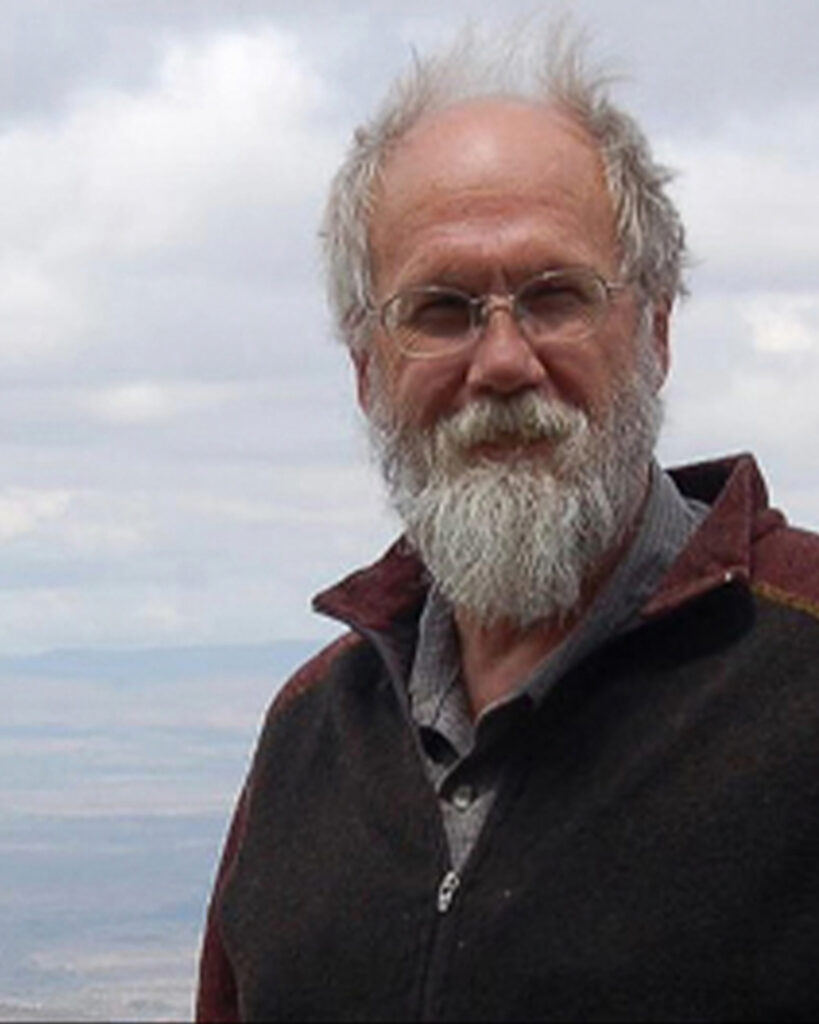
Joseph Moore
In such a landscape, you remember that the planet’s hard exterior, where we spend our entire lives, is so thin that we call it a crust. Its superheated interior, meanwhile, burns with an estimated forty-four trillion watts of power. Milford was once a lead-, silver-, and gold-mining town, but when I visited the area on a sunny spring morning a scientist named Joseph Moore [research professor in civil and environmental engineering and adjunct professor in the Department of Geology and Geophysics at the University of Utah] was prospecting for something else: heat.
Heat mined from underground is called geothermal — “earth heat,” in ancient Greek — and can be used to produce steam, spin a turbine, and generate electricity. Until recently, humans have tended to harvest small quantities in the rare places where it surfaces, such as hot springs. Moore’s mission, as a geologist at the University of Utah and the project leader of the Frontier Observatory for Research in Geothermal Energy (FORGE), is to “develop the roadmap that is needed to build geothermal reservoirs anywhere in the world.” This road is long, and much of the map remains blank. The biggest problem is drilling miles through hot rock, safely. If scientists can do that, however, next-generation geothermal power could supply clean energy for eons.
During my trip, Moore’s corps of consultants and roughnecks were drilling the fifth borehole of their experimental project. Their rig, armed with a diamond drill bit, towered like a rocket over the rural landscape; miles of solar panels and wind turbines receded into the distance. The hole, which would eventually be L-shaped, was five thousand feet deep, and the team had another five thousand to go, horizontally. But, before they could drill any farther, they needed to install a hundred-and-fifty-ton steel tube in the hole, using special heat-resistant cement to glue it into place. The tube was like a massive straw that was meant to transport hot water and steam from an artificial underground reservoir—without contaminating local groundwater or triggering earthquakes.
At 6:15P.M.on May 3rd, cement had started flowing into the hole. Four hours later, part of the cement folded in on itself. The next morning, the cement supply ran out; the men had miscalculated how much they needed. This brought the three-hundred-million-dollar operation to a maddening halt. Moore, in bluejeans and a FORGE-branded hard hat, called his supplier. The nearest batch of suitable cement was five hundred miles away, in Bakersfield, California. The truck would not arrive until after dark.
Right now, geothermal energy meets less than one per cent of humanity’s electricity and heating needs—a puny, almost irrelevant portion. Fossil fuels power about eighty per cent of human activity, pumping out carbon dioxide and short-circuiting our climate to catastrophic effect. Converts argue that geothermal checks three key boxes: it is carbon-free, available everywhere, and effectively unlimited. Crucially, it is also baseload, which means that, unlike solar panels or wind, it provides a constant flow of energy. Companies and governments have taken notice. “Over the last two years, I have watched this exponential spin-up of activity in geothermal,” Tony Pink, a drilling expert in Houston, told me, in 2023.
But there is a glaring risk of moon shots: often, they miss. “There’s basically zero chance that you’re going to develop a moon-shot technology and have it be commercial in five years, on a large-scale, worldwide,” Mark Jacobson, a Stanford engineering professor and the author of “No Miracles Needed: How Today’s Technology Can Save Our Climate and Clean Our Air,” told me. That’s how long humanity has to lower emissions before climatic devastation, according to his calculations. “There’s a very decent chance you can do that with wind and solar,” he said. Perhaps, when resources and time are finite, trying and failing — or simply taking too long — could be worse than not trying at all.
Read the rest of the story by Brent Crane published in The New Yorkerhere. (Requires setting up an account for limited, trial access.)
Joseph Moore, featured in the story above, was recently honored by the Utah State Legislature for his lifetime of service and dedication to advancing geothermal energy. Read more here.

 Over the course of an academic career spanning five decades, the University of Utah geoscientist has developed numerous forensic tools, such as isotope analysis, for understanding geological processes that affected the course of life on Earth, according to presentations given Saturday at a symposium to reflect on the contributions of Cerling, who is retiring this year.
Over the course of an academic career spanning five decades, the University of Utah geoscientist has developed numerous forensic tools, such as isotope analysis, for understanding geological processes that affected the course of life on Earth, according to presentations given Saturday at a symposium to reflect on the contributions of Cerling, who is retiring this year.



 Friends, classmates, scientists, biologists, congratulations on blazing your trail through your undergraduate degrees! No matter how long it took you to get here or what path you took, this is the culmination of all your hard work … but this is not the end of your education, or at least I hope it isn’t, and I don’t mean whatever post-graduate programs you might be attending after we toss our caps. I hope you continue to learn and challenge yourselves long into the future.
Friends, classmates, scientists, biologists, congratulations on blazing your trail through your undergraduate degrees! No matter how long it took you to get here or what path you took, this is the culmination of all your hard work … but this is not the end of your education, or at least I hope it isn’t, and I don’t mean whatever post-graduate programs you might be attending after we toss our caps. I hope you continue to learn and challenge yourselves long into the future.



